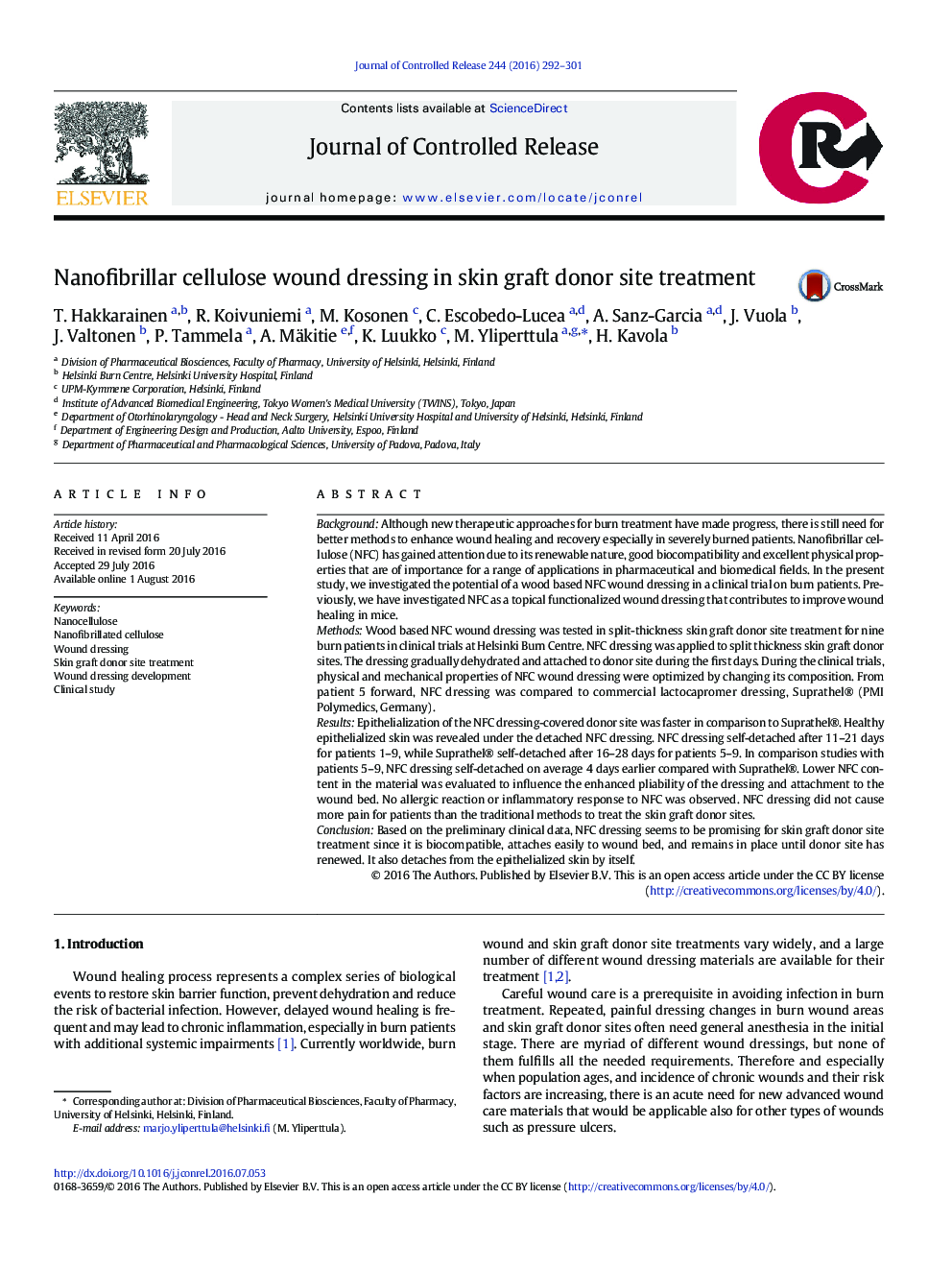| کد مقاله | کد نشریه | سال انتشار | مقاله انگلیسی | نسخه تمام متن |
|---|---|---|---|---|
| 5434049 | 1398083 | 2016 | 10 صفحه PDF | دانلود رایگان |

BackgroundAlthough new therapeutic approaches for burn treatment have made progress, there is still need for better methods to enhance wound healing and recovery especially in severely burned patients. Nanofibrillar cellulose (NFC) has gained attention due to its renewable nature, good biocompatibility and excellent physical properties that are of importance for a range of applications in pharmaceutical and biomedical fields. In the present study, we investigated the potential of a wood based NFC wound dressing in a clinical trial on burn patients. Previously, we have investigated NFC as a topical functionalized wound dressing that contributes to improve wound healing in mice.MethodsWood based NFC wound dressing was tested in split-thickness skin graft donor site treatment for nine burn patients in clinical trials at Helsinki Burn Centre. NFC dressing was applied to split thickness skin graft donor sites. The dressing gradually dehydrated and attached to donor site during the first days. During the clinical trials, physical and mechanical properties of NFC wound dressing were optimized by changing its composition. From patient 5 forward, NFC dressing was compared to commercial lactocapromer dressing, Suprathel® (PMI Polymedics, Germany).ResultsEpithelialization of the NFC dressing-covered donor site was faster in comparison to Suprathel®. Healthy epithelialized skin was revealed under the detached NFC dressing. NFC dressing self-detached after 11-21Â days for patients 1-9, while Suprathel® self-detached after 16-28Â days for patients 5-9. In comparison studies with patients 5-9, NFC dressing self-detached on average 4Â days earlier compared with Suprathel®. Lower NFC content in the material was evaluated to influence the enhanced pliability of the dressing and attachment to the wound bed. No allergic reaction or inflammatory response to NFC was observed. NFC dressing did not cause more pain for patients than the traditional methods to treat the skin graft donor sites.ConclusionBased on the preliminary clinical data, NFC dressing seems to be promising for skin graft donor site treatment since it is biocompatible, attaches easily to wound bed, and remains in place until donor site has renewed. It also detaches from the epithelialized skin by itself.
118
Journal: Journal of Controlled Release - Volume 244, Part B, 28 December 2016, Pages 292-301